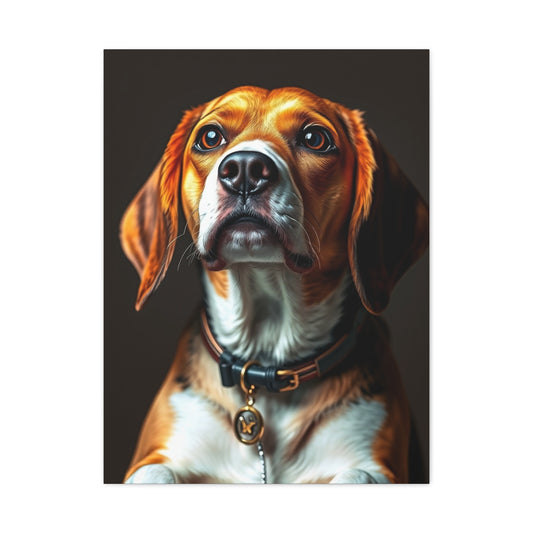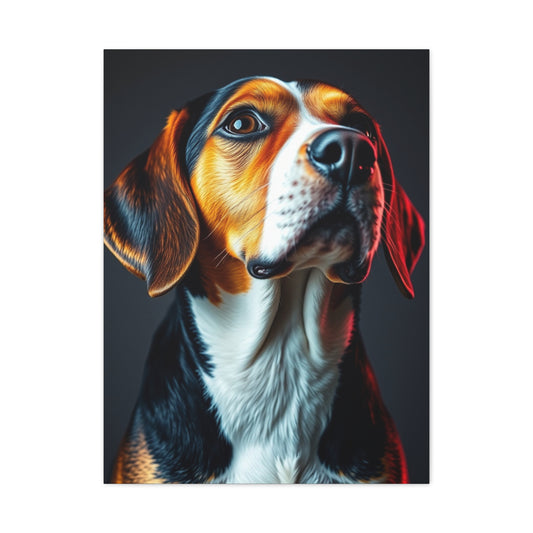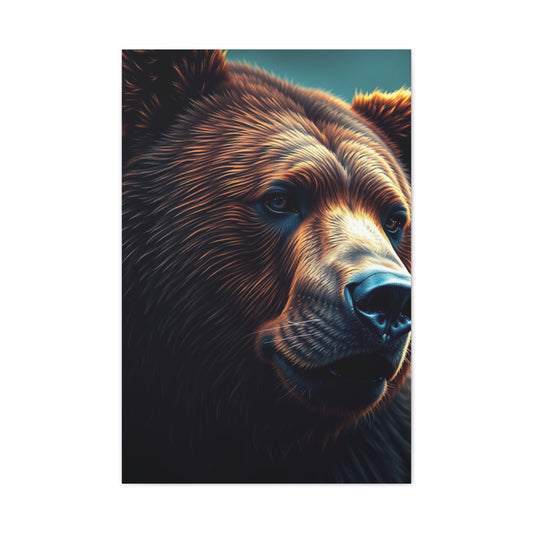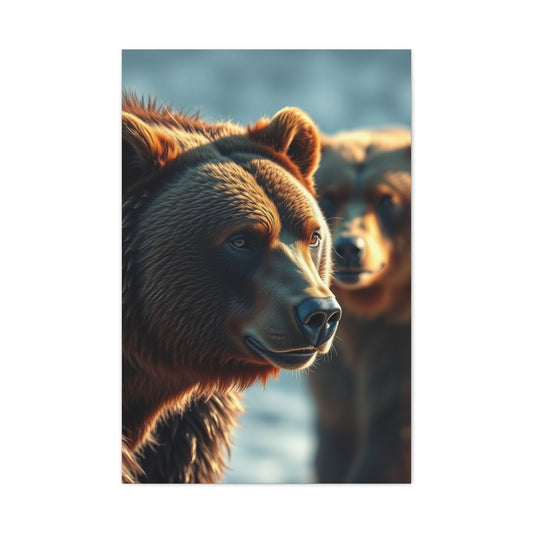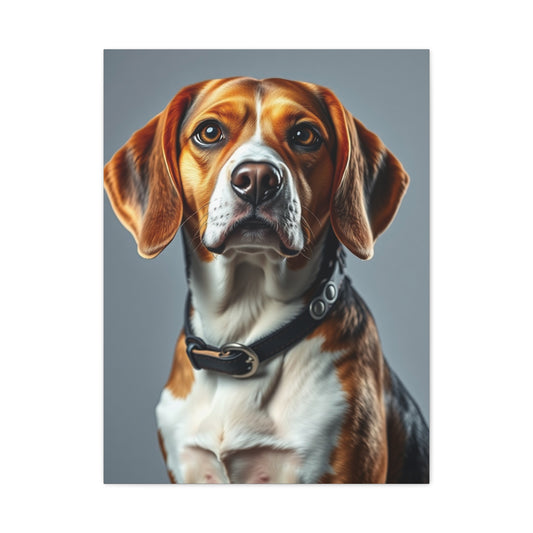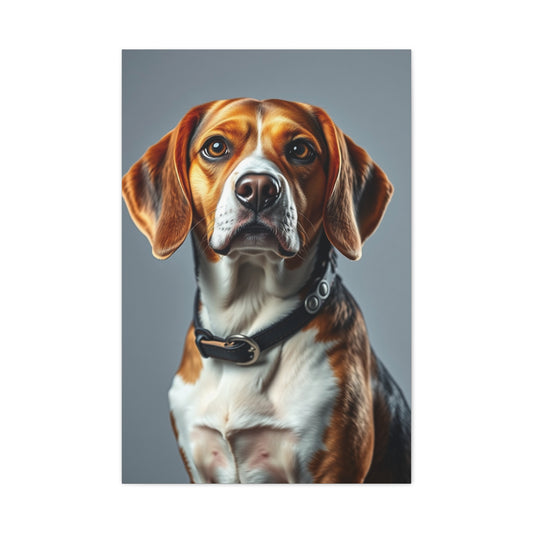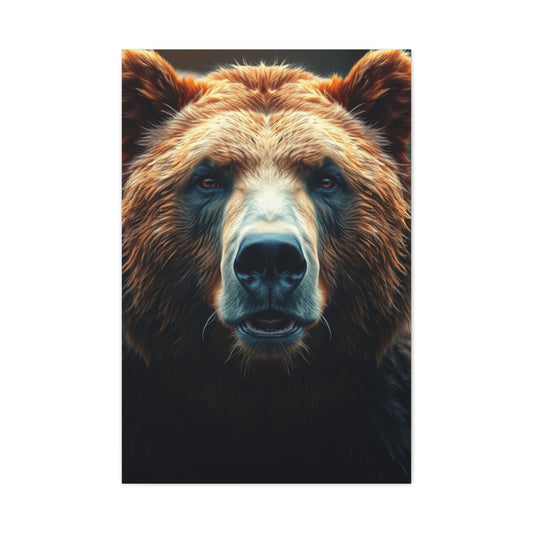Halloween is the perfect canvas for photographers eager to explore the eerie, the mysterious, and the macabre. With its atmospheric settings, creative costumes, and naturally dark themes, this spooky season opens up a world of imaginative possibilities. Whether you're using a high-end DSLR or your trusty smartphone, you don’t need an elaborate studio or an inflated budget to create compelling Halloween visuals. All it takes is ingenuity, thematic consistency, and an eye for the unexpected. Let’s explore ten captivating ways to enhance your Halloween photo sessions and craft images that linger in the viewer’s mind like a ghost in the fog.
1. Capture Spectral Forms Through Translucent Fabrics
Harnessing translucent materials to channel the ghostly aesthetic of Halloween photography is an effective technique that is both simple and atmospheric. When capturing eerie visuals, creating the illusion of a spirit or phantom figure can be achieved with readily available items such as gauze, lace, chiffon, or even sheer curtains. These fabrics act as ethereal veils, blurring the fine lines between reality and illusion, offering an intriguing visual effect that evokes the presence of something supernatural.
The process begins with positioning your subject behind the translucent fabric and aligning a light source behind them. This could be natural sunlight filtering through a window or an artificial light like a softbox or lantern. The backlight accentuates the shape of the subject, creating a sharp silhouette that stands out against the luminous background. This interplay of light and shadow lends a dreamy, surreal quality to the image, and when executed correctly, the photo resembles a paranormal apparition caught mid-transition between worlds.
What makes this approach truly effective in Halloween photography is the ability to manipulate the ghostly aura. By encouraging your model to press their face or hands against the fabric, subtle contours and facial impressions start to emerge. The slight indentations reveal just enough detail to stir the imagination without eliminating the mystery. Whether it's the hollow gaze of an eye socket barely visible through gauze or the outline of fingers clawing at the fabric, these fleeting details tap into our primal fear of the unknown.
Experimentation plays a pivotal role in refining this technique. Try varying the texture and transparency of the material to alter the intensity of the effect. A thicker fabric will result in a more abstract silhouette, while a finer mesh allows for intricate detailing. Play with exposure settings—longer shutter speeds can enhance moodiness, while higher contrast in post-processing can deepen the shadows and brighten the light surrounding the subject.
This technique flourishes in naturally backlit environments such as late-afternoon windows or forest paths where sunlight filters through trees. The contrast between soft, ethereal fabric and the raw natural elements surrounding it adds a grounded yet mystical tone to your visuals. Even indoors, using practical household materials and simple lighting can yield results that rival more complex setups.
To add layers of storytelling, consider combining costume elements with the translucent approach. A character clad in a flowing vintage gown or a skeletal mask beneath the fabric can give the viewer subtle narrative cues. The key lies in the suggestion of a story—the glimpse of emotion in a pressed hand, the frozen scream captured mid-pose, the hidden identity behind the cloth. These visuals go beyond mere decoration; they tell tales of the spectral, of figures long forgotten or wandering in limbo.
|
Related Catagories: |
This ghostly silhouette technique, while deceptively simple, opens the door to a plethora of creative concepts in Halloween-themed photo shoots. Whether you're working in an abandoned house, a quiet garden, or a darkened hallway, the haunting potential of sheer material, thoughtful lighting, and expressive posing can conjure some of the most captivating and spine-tingling images in your portfolio.
2. Embrace Decay and Disrepair in Atmospheric Locations
Nothing sets the mood for bone-chilling Halloween imagery like the haunting charm of neglected environments. Derelict spaces, weatherworn structures, and forgotten ruins offer more than just a backdrop—they serve as characters in their own right, adding texture, depth, and an unshakable sense of dread to your photographs. Seeking out such atmospheric locations is essential when constructing eerie narratives that resonate emotionally and visually.
These sites—crumbling barns, rust-covered industrial zones, decrepit porches, ivy-swallowed stairwells—are steeped in visual drama. Every flake of peeling paint and every shattered window whispers forgotten stories. Their decaying facades embody abandonment and vulnerability, which aligns seamlessly with the core aesthetics of Halloween-themed storytelling. For the photographer looking to encapsulate suspense, melancholy, or supernatural tension, there is no substitute for the richness these environments provide.
Finding the right location is both an artistic and logistical endeavor. Begin by researching nearby ghost towns, vacant lots, or historical buildings in disuse. Local knowledge and scouting apps can help identify places with visual impact and public access. When exploring such sites, prioritize safety and legality. Many decaying buildings are structurally unstable, infested with hazardous materials, or restricted by property laws. However, even capturing images from a respectful distance outside a collapsing house or decaying asylum can yield haunting results.
In terms of composition, aim to incorporate the location as an integral narrative element. Frame your subject so that the disrepair becomes a co-star in the shot. For example, have your model emerge from a vine-covered doorway or sit solemnly under a collapsing roof. Allow the natural elements to interact with the character—dried leaves caught in a cloak, ivy creeping along a costume, or moonlight streaming through broken rafters. These organic details elevate the authenticity and emotional resonance of the scene.
Time of day plays a crucial role in emphasizing the mood of a location. Twilight or the "blue hour" just after sunset casts a cold, desolate hue that reinforces the feeling of abandonment. Overcast weather adds texture to skies, muting the light and reducing glare, which enhances the gritty realism of a haunted setting. If you're capturing motion or using slow shutter speeds in these low-light conditions, a tripod becomes essential to prevent blur while preserving clarity.
This kind of setting is ideal for characters rooted in folklore and ghost stories. Witches roaming ancient ruins, lost souls waiting on crooked staircases, or masked figures vanishing into the woods—these visuals are infinitely more compelling when their environment supports the tale. Costuming should reflect the derelict theme. Think distressed clothing, aged fabrics, dirt-stained robes, or even minimalistic costumes that contrast starkly with the wild decay around them.
Color grading during post-production can further accentuate the mood. Cooler tones—blues, greens, desaturated sepia—can make the photos feel colder, lonelier, or more otherworldly. Enhancing shadows, deepening blacks, and adjusting highlights adds volume to cracked walls and splintered beams. For an extra atmospheric touch, you can overlay subtle textures like dust particles, rain stains, or digital fog to increase the sense of desolation.
Another creative approach involves integrating abandoned elements directly into the photo's narrative. An empty wheelchair in the corner, a broken music box on the floor, a decayed painting hanging askew—all these items contribute clues to an unseen backstory. When positioned carefully, they encourage viewers to ask questions, to fill in the blanks with their own imagined horror stories.
In essence, utilizing spaces that carry the patina of time provides Halloween photographers with ready-made sets bursting with visual storytelling potential. These environments breathe life into ghostly tales, amplify the dread in every frame, and blur the boundary between the fictional and the possible. With a keen eye for detail, a thoughtful approach to safety, and a passion for evoking emotion, these settings will enrich your seasonal photo collection with unforgettable, spine-chilling artistry.
3. Integrate Smoke and Creative Filters for Surreal Effects
In the world of Halloween photography, achieving that otherworldly visual impact often depends on how well you manipulate mood and atmosphere. Smoke, filters, and optical distortions provide an effective path to achieving haunting visuals with minimal cost and maximum effect. Rather than relying on digital overlays or CGI trickery, real-time physical elements such as smoke bombs and improvised lens filters offer a tangible, cinematic quality that elevates eerie portraits and sinister still lifes alike.
Smoke, in particular, introduces a dreamlike or ethereal quality to your compositions. A well-placed smoke bomb can create dense, swirling clouds that lend mystery, concealment, and motion to otherwise static scenes. Use it to simulate mist seeping from an open grave, ghostly vapors spilling from a cauldron, or spectral fog enveloping a lone character in the woods. Dropping a smoke bomb into a carved jack-o’-lantern, for example, causes the vapors to billow from the eyes and mouth, transforming a simple pumpkin into a portal of dark magic. The choice of color is critical—opt for crimson to suggest danger or violence, emerald to hint at necromancy, or gray to mimic traditional fog or spectral haze.
Placement and environmental conditions also matter. Wind can dramatically affect the direction and density of your smoke, so shooting in still air or sheltered outdoor areas is preferable for maximum control. Always take safety into account—avoid using smoke bombs in dry areas, around flammable materials, or indoors where ventilation is poor. Protective gloves and a clear safety plan are essential to keep your session safe and enjoyable.
Beyond smoke, optical filters—either purchased or handmade—introduce whimsical or ominous elements into your frame. A popular method for creative control is crafting bokeh filters. These are shaped cutouts placed over the lens to transform points of light into thematic icons. A heart becomes a bat, a star becomes a pumpkin, and a circle becomes a ghost. These DIY bokeh masks are especially effective in night photography where artificial lights—like streetlamps, string lights, or candles—can be transformed into symbolic Halloween imagery that dances in the background of your composition.
If you're looking to distort and abstract your scene, consider wrapping a thin layer of cling film or transparent plastic over your lens. This simple yet powerful hack mimics the appearance of smeared glass or fogged vision, adding an unsettling softness and surreal texture to your images. You can smudge the film slightly or color it with markers to introduce subtle tints that affect your light balance. The result resembles a haunted memory or a fragmented dream, especially when combined with dim lighting or chiaroscuro setups.
Some photographers even use prisms, crystals, or broken mirrors in front of the lens to split the frame and introduce unnatural flares or duplications. These refractions introduce tension by destabilizing what the viewer expects to see—turning a calm portrait into something charged with supernatural energy. Strategically placing lights at sharp angles can create flaring or lens aberrations that mimic otherworldly presences or glowing auras.
Surreal Halloween photos don’t always have to be literal. The strongest visual impressions often come from subtle manipulations of texture, lighting, and perspective. When you layer atmospheric tools like smoke with abstract visuals from filters or reflections, your final image becomes a puzzle—something viewers want to look at again, trying to unravel its secrets. These effects, when combined thoughtfully, allow you to portray themes like possession, transformation, isolation, or madness without saying a word.
Incorporating these physical and optical elements into your Halloween shoots doesn’t just make your photos look spooky—it deepens the conceptual impact. By making small scenes feel larger than life and transforming familiar subjects into distorted versions of themselves, you open up a visual dialogue with the viewer. You hint at what lies beyond the veil of perception, creating photographs that resonate far beyond the surface.
4. Emphasize Ghostly Movement with Intentional Blur
Capturing motion blur during Halloween photography is a powerful method to evoke spectral presence, mental instability, or the passage of time. In contrast to sharp and pristine imagery, deliberate blur suggests that something is in flux—an entity transitioning between dimensions, a cursed soul caught in limbo, or a panicked escape through shadowed corridors. This technique is emotionally charged, unsettling, and beautifully suited to the genre of horror and supernatural visual storytelling.
To begin, set your camera to a slower shutter speed. The exact timing depends on the scene and movement, but speeds ranging from 1/4 second to several seconds are ideal for revealing motion trails. Using a tripod stabilizes the background, allowing only the moving subject to blur. This distinction between stillness and movement makes your model appear as if they're phasing through space, like a ghost or restless apparition. It can also add emotional depth—portraying grief, rage, or torment through abstract body shapes or swirling garments.
If you want to create chaos or tension rather than serenity, consider removing the tripod altogether. Instead, try camera panning, shaking, or tilting during the exposure. This technique introduces a frenetic, unstable quality that resembles nightmares or disorientation. It’s especially effective for themes like haunted madness or dreamlike horror. Zoom blur—changing your focal length mid-exposure—introduces a spiraling vortex-like effect that can surround your subject in energy or simulate supernatural forces at work.
Clothing and props can play a vital role in enhancing the blur effect. Flowing fabrics like capes, veils, or loose sleeves create elegant motion trails that mimic wings or shadows. A subject running with a lantern or dragging a weapon will leave behind light streaks and subtle tension lines. Costumes that incorporate fringe, feathers, or tassels are also ideal for creating dynamic visuals as these elements respond dramatically to movement.
Environmental conditions can further enhance your results. Shooting in low light helps extend shutter speed naturally, while foggy or misty conditions soften the frame, intensifying the spectral quality. Backlighting your subject with a flashlight or portable LED creates glowing edges that separate them from the blur, offering a painterly silhouette wrapped in motion. Try combining light trails from candles or sparklers to capture supernatural marks in midair, reminiscent of incantations or spiritual energy.
Intentional blur doesn't have to dominate the entire composition. It can be a background detail—a hand reaching from the shadows, a child running behind the main subject, or a figure fading into a hallway. These subtle uses of blur add unease, implying hidden narratives that the viewer must piece together. The ambiguity creates space for imagination and psychological engagement, deepening the impact of your photos.
|
Related Catagories: |
In post-production, enhance the emotional tone by adjusting exposure, contrast, and shadows. You can amplify the ghostly feel by adding grain or slightly desaturating the image to mimic old film. Adding overlays like dust, scratches, or faint textures can make the image feel like a lost moment captured by a cursed lens or ancient relic. A gentle vignette can focus attention while leaving the edges of the frame murky and unresolved.
This technique is versatile enough to be used in character-based shoots, abstract scenes, or environmental storytelling. Whether you're illustrating a possession, the reappearance of a forgotten soul, or the quiet drifting of a witch through the forest, motion blur invites emotion into your composition. It's not about perfection—it’s about evocation, the conjuring of fear, wonder, and the ephemeral.
The real magic of intentional blur in Halloween photography lies in its ability to disrupt reality. It asks viewers to slow down, to interpret the distortion, and to feel something beyond what the eyes can clearly define. Through long exposures, blur becomes more than just a technical artifact—it becomes a language of ghosts.
5. Use Desaturation and Textures to Evoke Timeless Horror
In Halloween photography, the manipulation of color plays a crucial role in crafting the emotional atmosphere of your visuals. While bright, saturated hues can be eye-catching in standard portraiture, Halloween aesthetics often thrive on a more subdued, timeless palette. Desaturation is not merely a stylistic choice—it’s a storytelling device that evokes nostalgia, tension, and psychological unease.
By dialing down vibrant tones, photographers can channel the ghostly, decayed essence of vintage horror. This approach mirrors the chilling monochrome style of classic horror cinema, where the absence of color heightened shadows, emphasized character emotion, and created a suspenseful mood. Using a grayscale or sepia-tinted look instantly transports the viewer to a different era, where each crack in the wall or drop of blood seems more sinister and symbolic.
Full desaturation isn’t always necessary to achieve a haunted effect. Selective desaturation—where specific colors are muted while others remain—offers a nuanced method to guide the viewer’s eye. For example, reducing the dominance of overly saturated oranges or artificial blues can shift focus toward the subject’s facial expression, costume texture, or eerie surroundings. When applied thoughtfully, these subtle tweaks ensure the story isn't lost in a sea of color noise.
Textural overlays can further push your Halloween images into the realm of unsettling nostalgia. Digital tools allow for the addition of tactile, almost tangible surfaces—grunge, dust particles, hairline scratches, torn film edges, and water-damaged paper effects. These textures create the illusion that your image is not new, but an artifact—something aged, forgotten, rediscovered under suspicious circumstances. When layered carefully, they don’t overpower the image but add dimension and storytelling weight.
Experiment with layering multiple textures at low opacities to mimic the randomness of natural decay. For instance, a texture that mimics cracked varnish or brittle newspaper can simulate decades of wear. Combine this with darkened vignetting or edge blur to draw focus to the core subject, making peripheral areas feel as though they are fading into the void. These visual treatments resonate deeply in Halloween photography because they evoke the fragility of memory and the inevitable passage of time—core themes in ghost stories and supernatural legends.
The magic of this technique lies in its flexibility. Whether you are photographing a gothic bride in a haunted mansion, a scarecrow looming in a misty field, or a child in costume against a crumbling brick wall, desaturation and texture help create a scene that feels part legend, part nightmare. These visual elements don’t just make your images look scary—they make them feel steeped in forgotten lore.
In post-processing, consider adjusting your tone curves and contrast levels to emphasize shadows and reduce midtones. This pushes the visual weight toward the darker spectrum, which works in tandem with desaturation to create intensity. For an ethereal mood, apply a slight fade to your blacks, giving the image a misty, dreamlike wash that softens harsh edges while keeping the viewer in suspense.
By combining these visual tools, you create an impression that lingers. Your Halloween photographs become more than documentation—they become relics, echoes of stories untold, and fragments of nightmares that refuse to be forgotten. The faded world you present feels real, ancient, and just out of reach, capturing the very essence of what makes Halloween such a captivating theme for visual storytelling.
6. Elevate Your Storytelling with Inventive Costumes and Expressions
When it comes to Halloween photography, few elements are as defining as the costumes and expressions of your subjects. While props and lighting set the stage, it’s the human (or non-human) figures at the center that breathe life into your spectral scenes. Generic costumes may do the job for casual trick-or-treating, but for photos that resonate on a deeper level, originality and intention are key. Inventive wardrobe choices, meticulous makeup, and calculated expressions elevate your work from decorative to unforgettable.
Rather than relying solely on commercially available outfits, dive deeper into thematic concepts that draw from folklore, arcane mythology, or psychological horror. Instead of photographing a basic vampire or witch, imagine an ancient forest spirit with moss-draped robes and glowing eyes, or a faceless bride clutching a bouquet of dried, blackened flowers. These costume ideas push beyond cliché and encourage narrative thinking. Each outfit becomes a visual shorthand for a larger, imagined world.
Crafting custom pieces or modifying existing garments can make a huge difference. Distressing fabric with scissors, sandpaper, or coffee staining gives clothing a lived-in or unearthed-from-the-grave look. Layering unconventional textures like netting, fur, bone jewelry, or broken glass can enhance the character’s realism. If budget is a concern, thrift stores often carry unique finds that can be adapted into eerie costumes with minimal effort and maximal creativity.
Makeup and prosthetics offer an opportunity to transform not just appearance, but mood and tone. Cracked porcelain doll cheeks, smeared black eyeliner, rotting flesh textures, or hollowed-out eyes can communicate far more than words. Use shadows and light to emphasize these features and avoid making them overly symmetrical—imperfection and asymmetry often heighten the discomfort viewers feel. Even minimalist makeup, when paired with expressive acting, can be powerful. A pale face with dark lips and sunken eyes is simple but timeless.
Expression plays a critical role in delivering impact. A snarl may express rage, but silence, stillness, and blankness often evoke more unsettling reactions. Consider having your subject stare directly into the lens with wide, unblinking eyes, or tilt their head subtly as though listening to a sound only they can hear. These nuanced expressions tap into the psychology of fear, suggesting something is deeply wrong without needing explicit storytelling.
In terms of direction, give your models prompts instead of poses. Ask them to act as if they’ve just emerged from a grave, or are trying to suppress an ancient curse. Encourage movement that feels unnatural—jerky hands, frozen limbs, or a slow approach toward the camera. The more fully your subjects inhabit their characters, the more immersive and striking your imagery will become.
The setting should enhance the costume narrative. A witch looks more ominous in a foggy swamp than in a well-lit kitchen. A demon is more believable when framed against a scorched, barren landscape than in front of a tidy hedge. Let your location reflect the energy of the character. If necessary, create your own setting using smoke, fabric backdrops, or discarded furniture to mimic a ruin or cavern.
Lighting choices can support the character’s emotional tone. Cold, upward light can create disturbing shadows on a face. Harsh side-lighting can highlight texture and flaws, while low lighting with red gels can suggest danger, possession, or fire. Don’t be afraid to experiment—Halloween is the season of distortion and unpredictability.
When everything works in harmony—costume, makeup, expression, setting, and light—you transcend simple portraiture. Your photos begin to tell stories: of entities lost to time, of haunted souls seeking resolution, of supernatural beings drifting between realms. Each image becomes a scene from an unwritten horror tale, rich in visual language and emotional subtext.
Great Halloween photography isn’t about jump scares or gore—it’s about suggestion, mystery, and storytelling. It invites the viewer to linger, to imagine what happened just before or after the frame was taken. And that emotional engagement, born from a well-executed character and powerful expression, is what makes a photo unforgettable.
7. Alter Perception with Uncommon Camera Angles
Perspective plays a psychologically profound role in how viewers interpret a scene. Traditional eye-level compositions are safe and familiar, but deviating from this norm can disturb, intrigue, or provoke—exactly the kinds of reactions you want in Halloween-themed photography. The act of tilting your lens, crouching on the ground, or shooting from overhead is not merely a stylistic flourish; it’s a tool to manipulate how your audience experiences fear, dominance, isolation, or chaos within a single frame.
Low-angle shots, where the camera looks upward at the subject, dramatically amplify power and menace. A figure looming from this perspective seems larger-than-life, even monstrous, emphasizing their control or threat. This is especially effective for characters like reapers, cult leaders, or demons—figures intended to overwhelm the viewer both physically and emotionally. Use environmental elements such as stormy skies, bare trees, or darkened buildings behind the subject to further emphasize their dominance and the atmosphere of dread.
Conversely, high-angle shots diminish subjects by literally looking down on them. This creates a sense of vulnerability, helplessness, or fragility. For instance, capturing a child in costume from above can make them seem lost or exposed, especially when paired with a shadow-filled setting. If the subject looks directly up at the camera with wide eyes or outstretched hands, the resulting tension becomes palpable. This angle also works wonderfully for portraying victims in a haunted scene or someone trapped in an uncanny dream sequence.
Wide-angle lenses add another dimension of creative control. At close range, these lenses distort proportions, causing faces to bulge or limbs to elongate unnaturally. While this might be undesirable in conventional portraiture, it becomes a powerful asset in horror photography. You can amplify this distortion to create a sense of unease or even surreal grotesquery. For instance, shooting a mask-wearing subject at wide angle, inches from the lens, can give them an alien or inhuman quality that’s impossible to ignore.
Don’t be afraid to physically obstruct your composition. Shooting through broken glass, translucent drapes, fence gaps, or dense foliage adds a voyeuristic or claustrophobic effect. This implies that something or someone is watching—or being watched—heightening the narrative tension. The sense of being an unseen observer or intruding upon a forbidden scene makes the viewer feel complicit in the story, drawing them deeper into the frame.
Dutch angles, where the camera is intentionally tilted so that the horizon line is no longer level, create an unsettling imbalance. This is particularly effective in psychological horror or dreamlike scenarios where you want to communicate that something is "off." The viewer may not even immediately notice the tilt, but they will feel its effects: confusion, dizziness, or mental unrest. This technique is highly effective in portraying madness, possession, or environments distorted by supernatural forces.
Angles from extreme distances also serve a unique role. Photographing from far away can isolate the subject within a vast, ominous landscape, emphasizing loneliness or exposure. A lone figure in the middle of a foggy field, dwarfed by trees or shrouded in mist, becomes a poignant metaphor for isolation or inevitable doom. Alternatively, cropping tightly into a facial expression at an unusual angle—such as from below a chin or over a shoulder—invites intimacy, discomfort, and curiosity.
These visual strategies collectively reinforce the core emotions associated with Halloween: fear, anticipation, anxiety, and the surreal. They challenge visual expectations, forcing the viewer to reevaluate spatial relationships and emotional cues within the scene. By playing with how the camera sees the world, you manipulate how the viewer feels—and in horror-themed photography, that feeling should never be safe or predictable.
8. Sculpt Mood with Shadows and Minimal Light Sources
In the realm of Halloween photography, lighting is not just a technical necessity—it is the very essence of visual storytelling. The absence of light, the depth of shadow, and the placement of a single flickering flame can be more evocative than any costume or backdrop. Mastering the art of shadow-sculpting transforms an ordinary image into something deeply atmospheric, capable of conjuring unease, curiosity, or outright fear.
Rather than aiming for evenly lit subjects, embrace low-light conditions to create dramatic chiaroscuro effects, where bright highlights meet dense darkness. This interplay between illumination and obscurity mimics the duality of Halloween itself—where the line between reality and nightmare blurs. A simple candle can become a potent tool, casting long, flickering shadows that stretch across faces, floors, or walls. The uneven light it produces breathes life into static scenes, suggesting movement or the presence of unseen forces just beyond the edge of vision.
Portable lanterns, colored gels, and LED panels provide more control while retaining the organic texture of minimal lighting. Colored lighting, in particular, sets emotional tone. Deep red implies blood, danger, or rage. Sickly green calls to mind decay, poison, and the unnatural. Blue hues convey melancholy, spectral presence, or cold detachment. When paired with dim surroundings, these color choices become visual metaphors that enrich your narrative.
Where you position your light source also matters immensely. Placing it beneath your subject exaggerates shadows in unnatural directions, a technique often used in ghost stories told around a campfire. Side lighting, especially when strong, divides the face in two—half illuminated, half lost in darkness—highlighting internal conflict or moral ambiguity. Backlighting your model creates a silhouette, perfect for rendering a subject anonymous, faceless, or otherworldly.
Window light, especially on gloomy days, can be harnessed to dramatic effect. Block out all other light sources to isolate a single beam falling on the subject. Let this light reveal just part of a face, a hand, or a weapon, leaving the rest to be swallowed by darkness. The resulting contrast is theatrical, almost painterly, channeling the aesthetic of gothic horror paintings or classic suspense films. When combined with props like masks, tattered veils, or cracked mirrors, the use of partial lighting creates a tableau of hidden identities and implied violence.
Masks themselves become even more terrifying under targeted lighting. A ray of light exposing just the eye socket or a blood-smeared smile evokes instant discomfort. These visual cues require minimal props or staging—they rely purely on how light sculpts the features and how shadow erases them. The less your audience sees, the more their imagination fills in the blanks, often with far scarier results than anything you could show explicitly.
Shadows can also be used as active elements in your composition. Cast large, distorted silhouettes onto walls, trees, or fog. Use blinds or netting to create patterns across the subject’s face. These details add complexity and suggest a hidden world existing parallel to the visible one. A person standing still while their shadow seems to move or bend unnaturally introduces a subtle horror that feels almost spiritual or metaphysical.
For group shots or scenes involving multiple subjects, use selective lighting to draw the eye strategically. Let some figures fade almost completely into the background while others emerge in sharp relief. This visual layering suggests hierarchy, importance, or even narrative conflict—who is real, who is imagined, who is predator and who is prey. In this context, light becomes not just an enhancer of form, but a weaver of plotlines.
Post-processing allows you to further manipulate your light and shadow balance. Use tools to deepen blacks, soften highlights, or introduce artificial gradients that mimic candle flicker or torchlight. But always strive to retain the integrity of your original light source—excessive digital lighting often lacks the character and unpredictability that real shadows bring.
Minimal lighting paired with dramatic composition doesn’t just produce spooky imagery—it seduces the viewer into an emotional response. Whether it's awe, dread, or suspense, the strategic absence of light invites contemplation, storytelling, and emotional resonance. In Halloween photography, shadows are more than voids—they are breathing entities, filled with secrets and waiting to be explored.
9. Add Charm to the Fright with Pet Portraits in Costume
While Halloween photography often leans toward the dark and dramatic, there's room for humor and heart—especially when pets are involved. Dressing your dog, cat, or other furry friend in themed attire creates a light-hearted contrast to the holiday’s spookiness. Choose simple costumes that won’t irritate or restrict your pet’s movement. Photograph in a familiar environment and use natural light to avoid startling them. Enhance the scene by including Halloween props such as miniature pumpkins, straw bales, or cobwebs. To keep their attention, hold up treats or squeaky toys above the camera lens. The results are often both adorable and festive, and they add a charming break from the otherwise chilling themes in your photo series.
10. Amplify the Atmosphere with Post-Processing Magic
Even after the shoot is over, the journey to a spine-tingling image continues in the editing room. Digital post-processing can transform a good photo into a haunting masterpiece. Use cooler temperature tones—icy blues, deep violets, and muted grays—to give your photo a spectral chill. Add artificial fog, ember glows, or floating orbs using brush tools or overlay layers in software like Photoshop or Lightroom. Creating light bursts around candles or eyes can mimic supernatural glows. Introducing subtle film grain, blood spatters, or shadowy figures in the background can also provide narrative depth. Just remember, less is often more—allow the edits to support your story rather than overwhelm it.
Conclusion: Tell Ghost Stories with Your Camera
Halloween photography isn’t confined to the obvious—it’s a playground for visual storytelling, emotional contrast, and dark imagination. Whether your goal is to terrify, amuse, or enchant, the tools you use—light, color, texture, and composition—should all work together to tell an unforgettable story. From phantom-like silhouettes and moody lighting to playful pet portraits and surreal edits, each technique in this guide offers a fresh perspective on capturing the eerie essence of Halloween. What matters most is not the cost of your gear, but the depth of your creativity and willingness to experiment. So grab your camera, find your shadows, and create images that haunt and delight long after the jack-o’-lanterns have gone out.








